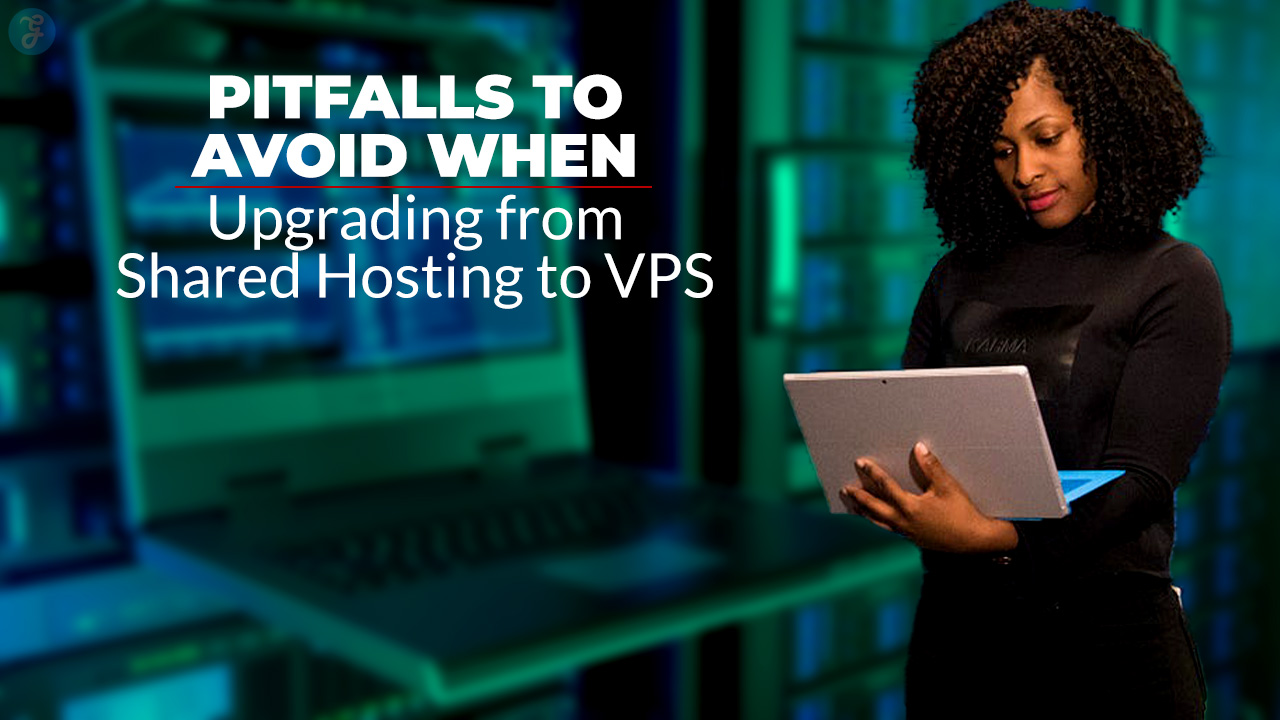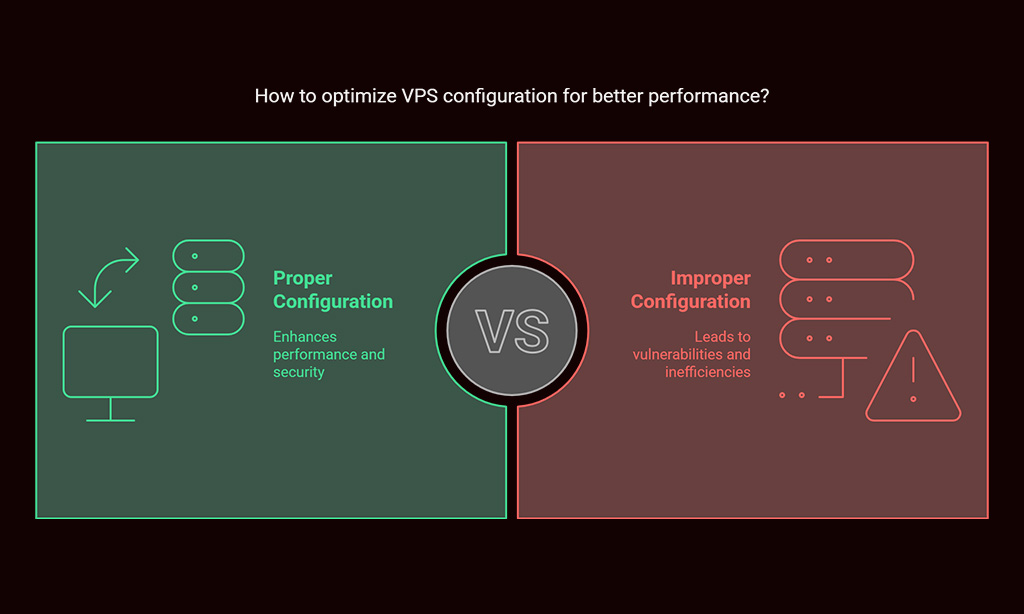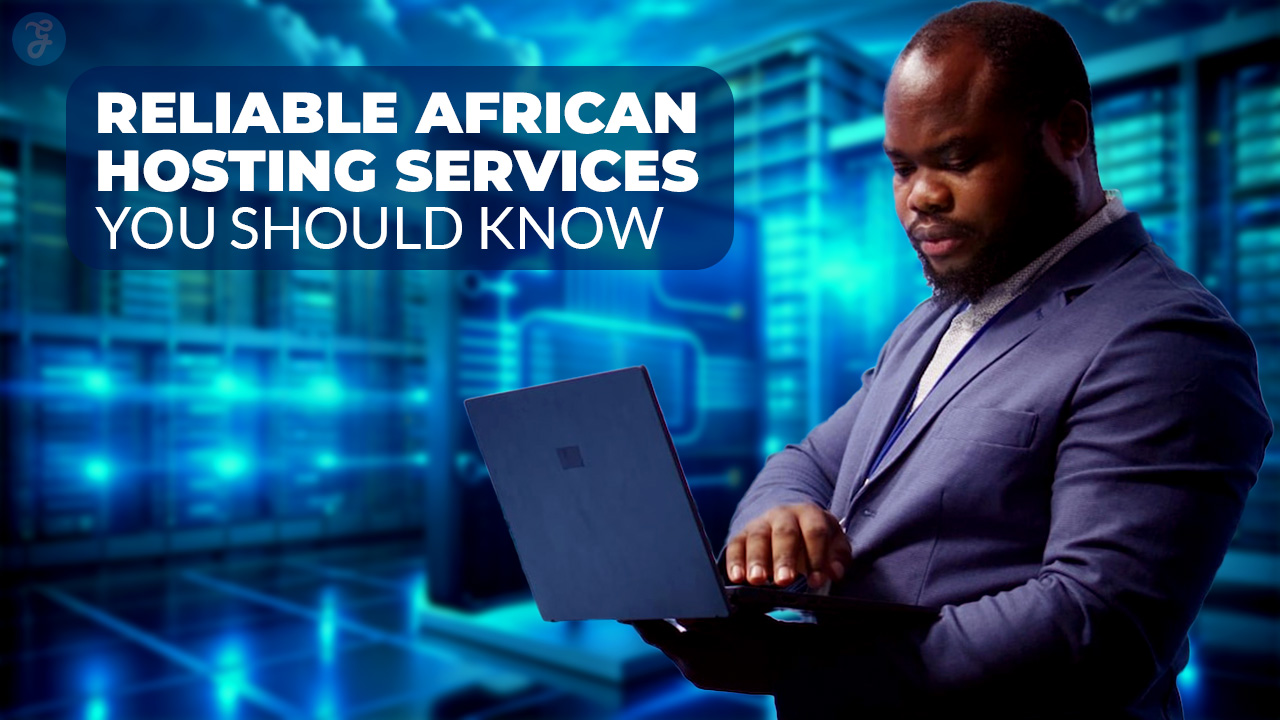Upgrading from shared hosting to a Virtual Private Server [VPS] can be a game-changer for your website, offering greater control, performance, and scalability.
However, this transition also introduces new challenges that, if not handled correctly, could lead to wasted resources, security risks, and operational inefficiencies. Many website owners make mistakes that cost them time and money when moving from shared hosting to VPS.
Shared hosting is a great starting point for small websites, offering an affordable and user-friendly solution. But as your site grows, shared hosting can become a bottleneck, leading to slow performance, downtime, and lack of flexibility.
Upgrading to VPS hosting offers dedicated resources, better control over server configurations, and enhanced security. However, this upgrade comes with complexities that require careful planning.
This article will take you through the 10 pitfalls to avoid when upgrading from shared hosting to VPS, offering practical advice, real-world examples, and tips to help you transition smoothly to a more powerful hosting environment.
Understanding the Transition from Shared Hosting to VPS
Before diving into the common pitfalls, it’s important to understand what a VPS is, how it differs from shared hosting, and why you might need to make the switch.
What Is Shared Hosting and VPS Hosting?
Shared Hosting is a hosting environment where multiple websites share the same server resources, such as CPU, RAM, and disk space. While this is an affordable option for small websites or blogs, it comes with limitations in terms of performance, customization, and scalability.
VPS Hosting [Virtual Private Server] provides a virtualized server environment within a physical server. While you still share the hardware with other users, your website is isolated in its own virtual space with dedicated resources. This offers more power, security, and flexibility compared to shared hosting.
| Feature | Shared Hosting | VPS Hosting |
| Resources | Shared resources [CPU, RAM, storage] | Dedicated resources [CPU, RAM, storage] |
| Performance | Limited by other websites on the server | More stable and predictable performance |
| Customization | Limited access to server configurations | Full root access for custom configurations |
| Security | Lower level of security due to shared environment | More secure due to isolated virtual environment |
| Cost | Most affordable option | More expensive but offers greater performance |
Why Upgrade to VPS Hosting?
Upgrading to VPS hosting makes sense for websites that need more resources, better control, or higher levels of security. Here’s why you might consider the transition:
- Increased Traffic: As your website grows and attracts more visitors, shared hosting can become overwhelmed. VPS hosting can handle increased traffic more efficiently.
- Customizability: VPS gives you more control over server settings, enabling custom configurations for your website’s needs.
- Better Security: VPS hosting is more secure due to its isolated environment, which reduces the risks associated with sharing resources with other users.
- Scalability: VPS allows you to easily scale resources as your website grows.
Pitfall 1: Underestimating Resource Requirements
One of the first challenges when upgrading to VPS is understanding how much server capacity you’ll actually need. Overestimating or underestimating your resource requirements can lead to performance issues or unnecessary costs.
Importance of Accurate Resource Planning
When transitioning from shared hosting to VPS, it’s crucial to assess your website’s needs accurately. Too few resources can lead to slow performance, while overprovisioning can result in higher-than-necessary hosting costs.
For example, a small business website might only require 2GB of RAM and 20GB of SSD storage, while a growing e-commerce store may need 8GB of RAM and 50GB of storage to handle the demands of a large product catalog and high traffic volumes.
| Website Type | Recommended Resources |
| Personal Blog | 2GB RAM, 20GB SSD storage |
| Business Website | 4GB RAM, 30GB SSD storage |
| E-commerce Site | 8GB RAM, 50GB SSD storage |
| High-Traffic Blog | 6GB RAM, 40GB SSD storage |
Tools for Monitoring Resource Usage
Before upgrading, you can monitor your website’s resource usage using tools like cPanel or Webalizer. These tools provide insights into CPU and memory consumption, helping you assess whether your website is outgrowing your current shared hosting environment.
Load Testing Before Upgrading
Running load tests can simulate high-traffic scenarios and help you identify your website’s resource needs under stress. Tools like Loader.io or GTMetrix can help you evaluate how your site behaves under varying loads.
Pitfall 2: Overlooking Server Management Responsibilities
While shared hosting is managed by the hosting provider, VPS hosting requires you to take on more responsibilities. Underestimating the amount of hands-on management required can lead to performance issues and security risks.
VPS Requires More Hands-On Management
With VPS hosting, you’ll have more control, but that also means more responsibilities. These include:
- Server updates and patches
- Configuring firewalls and security protocols
- Monitoring server performance and resource usage
- Setting up backups and disaster recovery plans
Should You Opt for Managed VPS Hosting?
If you’re not comfortable managing a server, opting for managed VPS hosting can be a good solution. With managed hosting, the provider handles server maintenance, updates, security, and monitoring, so you can focus on running your website without worrying about technical issues.
| Managed VPS | Unmanaged VPS |
| Provider manages server maintenance | You are responsible for server management |
| Includes security patches and updates | You must handle all updates and patches |
| Typically comes with 24/7 support | Limited or no technical support |
Pitfall 3: Choosing the Wrong VPS Plan
Choosing the wrong VPS plan can result in poor performance or unnecessary costs. Selecting a VPS plan based on price alone, without considering your specific needs, is a mistake many website owners make.
Different Types of VPS Hosting Plans
There are several types of VPS hosting plans, each offering varying degrees of performance, storage, and flexibility. The most common options include:
- Standard VPS: Provides a fixed amount of resources [CPU, RAM, disk space].
- SSD VPS: Uses Solid-State Drives [SSD] for faster data transfer speeds compared to traditional hard drives.
- Cloud VPS: Utilizes cloud infrastructure to offer scalable resources on demand, ideal for websites with fluctuating traffic.
| VPS Plan | Key Feature | Best For |
| Standard VPS | Fixed resources [RAM, CPU, Storage] | Websites with steady resource needs |
| SSD VPS | High-speed storage using SSD technology | Websites needing faster data processing |
| Cloud VPS | Scalable resources in the cloud | Websites with fluctuating traffic demands |
Factors to Consider When Selecting a VPS Plan
When selecting a VPS plan, consider:
- Your website’s traffic volume: A higher-traffic website will require more resources.
- The type of content you serve: Media-heavy websites may need more storage and bandwidth.
- Future growth: Choose a plan that allows you to scale resources easily.
Pitfall 4: Ignoring Security Measures
VPS hosting gives you more control over security, but with that control comes increased responsibility. Many users fail to take full advantage of the security features offered by VPS hosting.
Enhanced Security Features with VPS Hosting
VPS hosting offers several security advantages, such as:
- Dedicated firewalls: You can configure custom firewalls to block malicious traffic.
- SSL encryption: Enable SSL to ensure secure data transmission between your website and its visitors.
- Isolated environment: VPS hosting provides better isolation, reducing the risk of security breaches from other websites sharing the same server.
Key Security Practices for VPS
- Regularly install security patches and system updates.
- Use SSH for secure file transfers and disable FTP.
- Implement two-factor authentication [2FA] for access to critical systems.
- Set up regular backups to safeguard your data.
Pitfall 5: Neglecting Proper Backup Strategy
Losing your website data due to a server failure or human error can be catastrophic. Neglecting to set up proper backups is a costly mistake.
The Importance of Backups in VPS Hosting
VPS hosting doesn’t automatically include backups like shared hosting, which means you are responsible for ensuring your website’s data is safe. Regular backups are crucial to minimize the risk of data loss.
Automated vs. Manual Backups
Here’s a comparison between automated and manual backups:
| Backup Type | Advantages | Disadvantages |
| Automated Backups | Convenient, scheduled regularly, reduces risk of human error | May incur additional costs for VPS hosting |
| Manual Backups | More control over backup schedule | Requires time and effort to manage backups |
Both types of backups are essential, but automated backups are typically more efficient and reliable for most website owners.
Pitfall 6: Failing to Set Up Proper Monitoring
Once your website is running on VPS, it’s essential to continuously monitor its performance to identify potential issues early.
How to Monitor VPS Performance
Set up monitoring tools like Uptime Robot, Datadog, or New Relic to track your server’s performance. These tools will help you keep an eye on:
- Uptime: Ensure your website is accessible.
- Resource usage: Monitor CPU, RAM, and storage usage.
- Website speed: Track load times to ensure a fast user experience.
Benefits of Real-Time Monitoring
Real-time monitoring allows you to detect and resolve issues before they affect your website’s performance or availability.
Pitfall 7: Skipping Proper Server Configuration
When you move to a VPS, you gain full control over the server’s configuration, which opens up a world of customization. However, many website owners fail to properly configure their VPS, leading to poor performance, security vulnerabilities, and inefficiencies.
Default Settings Aren’t Enough
Many VPS providers offer default server configurations that might not meet the specific needs of your website. For example, certain server settings like memory limits, PHP configurations, and web server settings [e.g., Apache or Nginx] may need to be adjusted for optimal performance.
Failing to tweak these settings can result in slower load times, increased server load, or security risks.
Key Configurations to Check
Here are some common server settings to review and optimize when you first upgrade to VPS:
- PHP Configuration: Adjust memory limits, upload sizes, and execution times based on your website’s needs.
- Web Server Settings: Whether using Apache, Nginx, or another web server, ensure that the settings are optimized for your traffic volume and type of content.
- Database Optimization: For database-heavy sites [like WordPress], ensure that your database is optimized with caching and other optimizations to reduce server load.
- Firewall and Security Rules: Customize your firewall to block unnecessary ports and limit access to trusted IP addresses.
Example Configuration
For example, if you’re using WordPress on a VPS, you might need to adjust the following configurations:
- PHP Max Execution Time: Default settings can cause timeouts for larger processes, such as importing a database or running long scripts. You may need to increase the maximum execution time to avoid these issues.
- MySQL Optimization: Optimize your database by adjusting memory allocation and query cache settings to improve speed.
Here’s a basic example of a PHP.ini configuration that might benefit a WordPress site:
| Setting | Recommended Value |
| max_execution_time | 300 [seconds] |
| memory_limit | 256M |
| post_max_size | 128M |
| upload_max_filesize | 64M |
Tools to Help with Server Configuration
If you’re not familiar with server configurations, tools like cPanel, Plesk, or Webmin can provide user-friendly interfaces to manage server settings without needing extensive technical knowledge. However, if you have the technical expertise, directly editing configuration files through SSH is the most flexible option.
Pitfall 8: Failing to Optimize Website Performance for VPS
VPS hosting gives you more control over performance, but it’s still important to ensure your website is optimized to take full advantage of the resources at your disposal. Many users overlook the importance of website optimization for VPS performance.
Common Optimization Techniques
Here are some practical tips to optimize your website for better performance:
- Caching: Implement server-side caching like Varnish or Redis to reduce load times and server requests.
- Content Delivery Network [CDN]: A CDN caches static files across multiple servers worldwide, ensuring that visitors get faster load times no matter where they are located.
- Image Compression: Use tools like TinyPNG to compress images without losing quality, reducing bandwidth usage and speeding up load times.
- Minification of CSS and JavaScript: Minify CSS and JavaScript files to reduce their size, which can improve page loading speed.
Example of Caching
If your site is running on WordPress, you can use plugins like W3 Total Cache or WP Super Cache to configure caching easily. These plugins allow you to cache pages, database queries, and objects, significantly reducing the server load.
| Optimization | Benefit |
| Caching [Varnish/Redis] | Reduces load times by storing static data in memory |
| CDN [Cloudflare, AWS] | Speeds up site loading by serving content from multiple locations |
| Image Compression | Reduces bandwidth and improves loading speeds |
| Minification of Files | Decreases file sizes, improving load times |
Performance Testing Tools
To monitor and evaluate the performance of your website, consider using tools like Google PageSpeed Insights, GTmetrix, or Pingdom. These tools provide suggestions and insights into areas where your website could be further optimized.
Pitfall 9: Not Taking Advantage of VPS Scalability
One of the major benefits of VPS hosting is scalability — the ability to easily scale resources like CPU, RAM, and storage as your website grows. However, many website owners fail to take advantage of this flexibility, either by under-provisioning resources at the start or neglecting to upgrade when necessary.
Why You Should Monitor Resource Usage
As your website grows, your resource needs will change. It’s important to monitor resource usage regularly to ensure that you are not under-provisioned [which can cause performance slowdowns] or over-provisioned [which can lead to unnecessary costs].
How to Scale Your VPS Effectively
Most VPS hosting providers offer easy-to-use control panels that allow you to scale resources with a few clicks. You can usually upgrade your CPU, RAM, and disk space as your needs increase.
For example, if your website suddenly experiences a spike in traffic due to a marketing campaign or seasonal events, you can quickly scale up your VPS to handle the increased load. Once the traffic subsides, you can scale it back down to save costs.
Example of Scaling a VPS
If your website is currently running with 2GB of RAM and you experience a spike in traffic, you might want to upgrade to 4GB of RAM for smoother performance. After the traffic decrease, you can downgrade back to 2GB.
| VPS Resource | Initial Value | Upgraded Value | When to Upgrade |
| RAM | 2GB | 4GB | During traffic spikes or resource-heavy operations |
| CPU | 2 Cores | 4 Cores | If CPU usage exceeds 70% consistently |
| Storage | 30GB SSD | 50GB SSD | As the size of your website’s content increases |
Setting Up Auto-Scaling
If your hosting provider offers cloud-based VPS options, you may also have access to auto-scaling. This feature automatically adjusts your resources based on real-time demand, making it a great option for fluctuating traffic.
Pitfall 10: Ignoring Long-Term Maintenance
Once you’ve migrated to VPS hosting and configured everything, it’s easy to assume that your job is done. However, neglecting long-term maintenance is one of the most common mistakes that website owners make when managing a VPS.
Ongoing Maintenance Tasks
To keep your VPS running smoothly, regular maintenance is essential. Some of the ongoing tasks you should schedule include:
- Server updates: Regularly apply security patches and updates to prevent vulnerabilities.
- Database optimization: Clean up and optimize your databases regularly to improve performance.
- Backup management: Ensure your backup system is working properly and test restores periodically.
- Log monitoring: Check system logs for unusual activity or performance issues that need addressing.
Scheduling Maintenance
Set up a maintenance schedule to ensure that critical tasks are performed regularly. Whether it’s updating server software, optimizing databases, or testing backups, having a routine maintenance plan will help you avoid technical issues down the road.
| Maintenance Task | Frequency | Benefit |
| Server Software Updates | Monthly or as needed | Protects against security vulnerabilities |
| Database Optimization | Quarterly | Improves performance and reduces bloat |
| Backup Testing | Monthly | Ensures backups are functioning properly |
| Log Monitoring | Weekly | Helps detect issues before they become serious |
Consider Hiring a SysAdmin
If you don’t have the technical expertise or the time to manage server maintenance, consider hiring a System Administrator [SysAdmin]. A SysAdmin can handle your server’s upkeep, leaving you to focus on your website’s content and growth.
Takeaways
Upgrading from shared hosting to VPS hosting can be a powerful step forward for your website, offering better performance, scalability, and security. However, to truly benefit from this transition, it’s important to avoid the common pitfalls discussed in this article.
From accurately estimating your resource needs to ensuring proper server configuration and long-term maintenance, each step in the upgrade process is crucial to a successful VPS experience.
By taking the time to plan your upgrade, optimize your resources, and implement ongoing maintenance practices, you can ensure that your VPS hosting remains a valuable asset to your website’s growth and success.












































